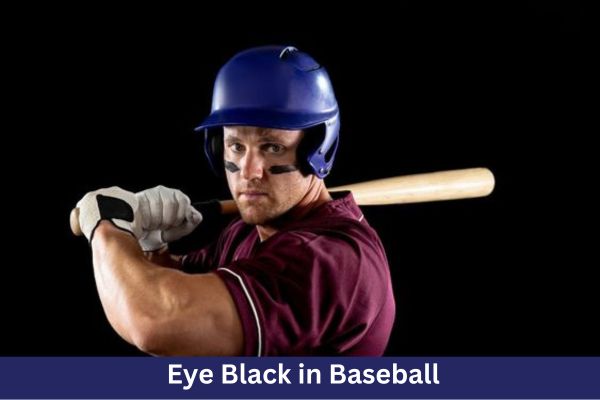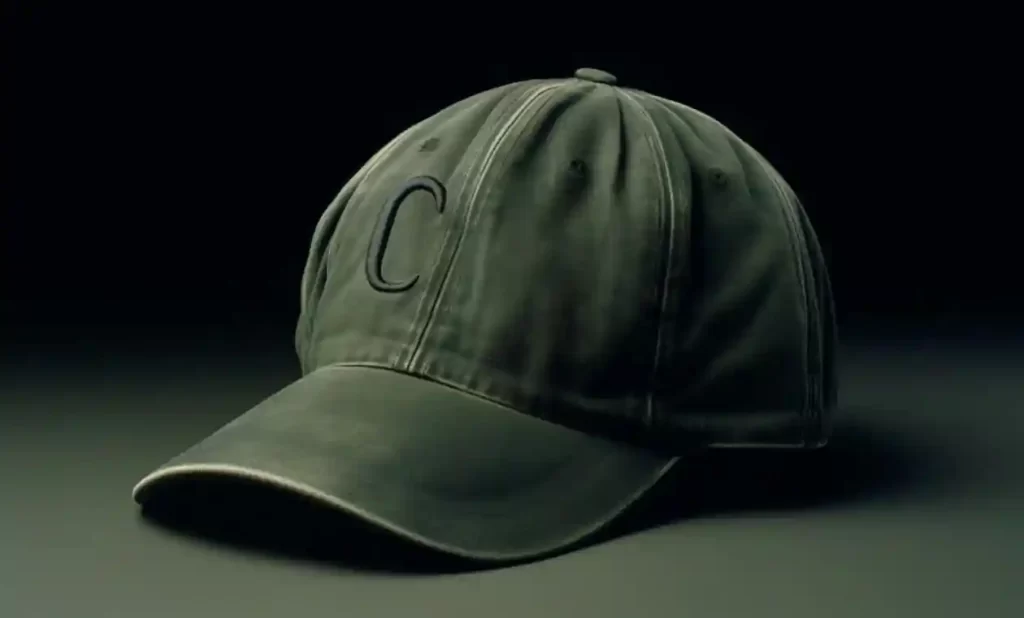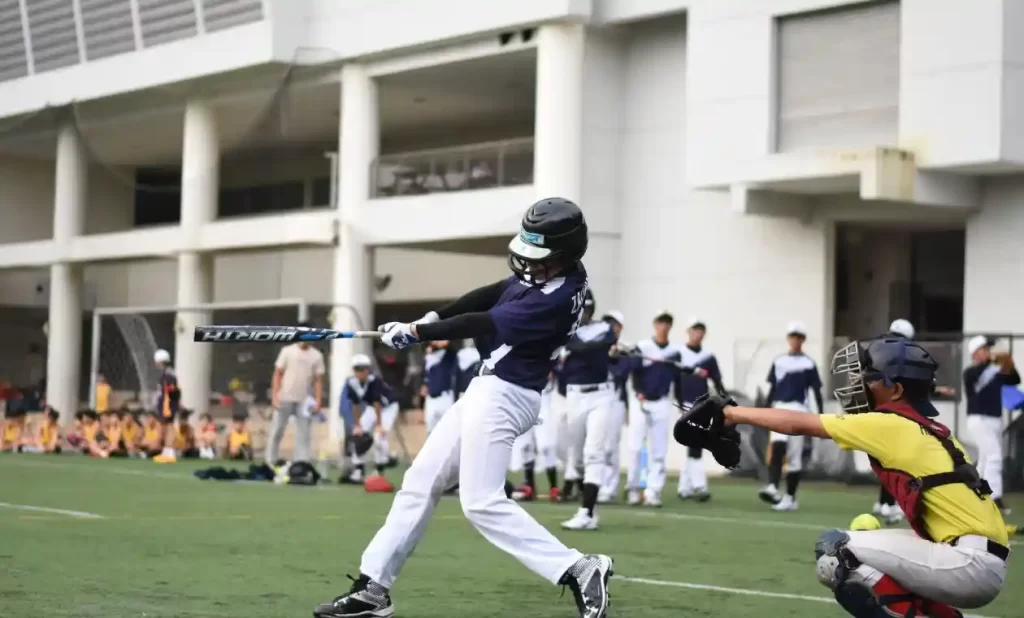 Image Credit-Pinterest
Image Credit-Pinterest
Eye black, a ubiquitous sight on the faces of baseball players, is more than just a cosmetic accessory—it serves a functional and strategic purpose on the field. This iconic feature consists of a dark material, often grease or stickers, applied under the eyes. Initially adopted for its practical benefits, eye black has evolved into a symbol of the game.
In essence, eye black serves two primary functions: to reduce glare from the sun and stadium lights and to convey a sense of focus and intimidation. The dark color absorbs light, preventing it from reflecting into the eyes and enhancing visual acuity. Beyond the technical advantages, the ritual of applying eye black has become deeply ingrained in baseball culture, signaling a player’s readiness and determination.
As we delve into the origins and significance of this practice, we’ll unravel the mystery behind why baseball players faithfully adorn themselves with eye black. From its historical roots to the psychological impact it imparts, this exploration will shed light on the enduring tradition and unravel the fascinating reasons that drive baseball players to wear eye black, making it an integral part of the sport’s visual identity. Join us on this journey to understand why eye black isn’t just a cosmetic choice but a strategic and symbolic element in the game of baseball.
Historical Significance
The origin of eye black in baseball can be traced back to its functional roots, where practicality met innovation on the sun-drenched fields of America’s pastime. In the early to mid-20th century, players began experimenting with substances like burnt cork or grease to combat the blinding effects of the sun. This impromptu solution wasn’t just about aesthetics; it was a pragmatic move to enhance visibility and prevent the sun’s glare from obstructing crucial plays.
One of the earliest adopters of this practice was baseball legend Babe Ruth, known for his trailblazing approach to the game. Ruth’s iconic status in the sport inadvertently elevated the use of eye black, turning it into a symbol of a seasoned and focused player. As the sport progressed, other luminaries like Hank Aaron and Willie Mays embraced the trend, solidifying its place in baseball culture.
However, it was the 1970s Oakland Athletics that truly transformed eye black from a functional necessity to a fashion statement. Led by the charismatic Reggie Jackson, the team popularized the distinctive wide stripes under the eyes, adding a flair of intimidation to their game. This era marked the transition of eye black from a practical tool to a symbol of grit and determination on the baseball diamond.
In the ensuing decades, the likes of Ken Griffey Jr., Derek Jeter, and Mike Trout continued the tradition, each contributing to the evolving narrative of eye black in baseball. Today, the application of eye black goes beyond its original purpose, symbolizing not only a shield against the sun’s glare but a badge of honor, a testament to the enduring legacy and adaptability of this iconic feature in the ever-evolving world of baseball.
Glare Reduction: A Strategic Shield on the Diamond
One of the primary functions that sets eye black apart as a crucial piece of baseball equipment is its remarkable ability to reduce glare from stadium lights. In the fast-paced world of baseball, where split-second decisions can determine the outcome of a game, maintaining clear vision is paramount. Eye black serves as a strategic shield, allowing players to focus on the game without being hindered by blinding lights.
The Science Behind It
When applied under the eyes, eye black absorbs light, preventing it from reflecting directly into the players’ eyes. This absorption of light is particularly crucial when playing under the intense brightness of stadium lights during night games. The contrast between the dark material and the ambient light helps enhance visual acuity, enabling players to track fast-moving balls, read the pitcher’s movements, and make split-second decisions with precision.
Crucial Situations
- Night Games and Late Innings: During night games, when the stadium lights are the primary source of illumination, the potential for glare is at its peak. In the late innings, when fatigue sets in, maintaining clear vision becomes even more challenging. Eye black becomes a valuable asset for players, ensuring they can stay focused and maintain peak performance as the game progresses into critical moments.
- Outfielders Tracking High Fly Balls: Outfielders, positioned far from the plate, often find themselves looking up into the lights while tracking high-flying balls. The glare reduction provided by eye black is instrumental in helping outfielders maintain an unobstructed view of the ball, increasing the likelihood of making crucial catches.
- Baserunners on the Paths: Baserunners, especially those attempting to steal bases, rely on quick reactions and a clear view of the bases and the catcher’s movements. In these situations, where split-second decisions are crucial, the glare reduction provided by eye black can make a significant difference in the success of a steal attempt.
In essence, the use of eye black isn’t just a matter of tradition or style; it’s a strategic choice that enhances a player’s ability to navigate the complexities of the game, especially in situations where glare could be a formidable adversary. As we delve deeper into the dynamics of eye black in baseball, its role as a visual ally becomes increasingly evident, proving that sometimes success on the diamond is as much about what you see as how you play.
Psychological Impact: The Unseen Power of Eye Black
Beyond its functional aspects, eye black exerts a profound psychological impact on both players and opponents, contributing to the intricate mind games that unfold on the baseball field. The application of eye black transcends practicality; it becomes a symbolic ritual, instilling a sense of focus, intimidation, and unwavering determination.
Creating a Mental Edge
- Focus and Determination: The act of applying eye black before a game can be likened to putting on a warrior’s paint. It signifies a mental switch, a transition from the ordinary to the extraordinary. For players, this ritual becomes a prelude to the mental toughness required on the field. The stark contrast of dark streaks beneath the eyes enhances the appearance of concentration, sending a powerful message to both teammates and opponents that they are locked in and ready for battle.
- Building Team Unity: When an entire team uniformly sports eye black, it fosters a sense of unity and camaraderie. This collective display amplifies the psychological impact, creating a visual representation of a team with a shared purpose, ready to face challenges head-on.
Intimidation Factor
- The Reggie Jackson Effect: The 1970s Oakland Athletics, led by Reggie Jackson, played a pivotal role in transforming eye black into a symbol of intimidation. Jackson, known as “Mr. October” for his postseason heroics, adopted a distinctive style with bold, wide streaks under his eyes. This bold fashion statement not only became his signature look but also added an aura of intimidation to his already formidable presence on the field.
- Sending a Message to Opponents: The stark contrast of dark eye black against the bright stadium lights creates a visual spectacle that isn’t just for the spectators—it’s a deliberate message to opponents. The intimidating image projected by players wearing eye black can disrupt the mental equilibrium of opposing pitchers, batters, and fielders. It’s a subtle yet impactful way of asserting dominance and sowing seeds of doubt in the minds of adversaries.
In the psychological chess game that is baseball, Eye Black emerges as a silent but potent player. It’s a visual cue that transcends the physical aspects of the game, influencing the mental and emotional landscape. As we explore the depths of this phenomenon, we unravel the intricate dance between function and symbolism, showcasing how something as seemingly simple as dark streaks beneath the eyes can become a powerful tool in the arsenal of baseball’s psychological warfare.
Fashion and Style: The Evolution of Eye Black as a Baseball Statement
In the realm of baseball, where tradition meets contemporary flair, eye black has transcended its functional origins to become a bona fide fashion statement. What began as a practical tool to combat glare has evolved into an expressive canvas for players to showcase their unique style and add a touch of flair to their on-field persona.
The Transformation of Function to Fashion
- Oakland Athletics’ Bold Stripes: The 1970s Oakland Athletics, known for their flamboyant and unconventional style, played a pivotal role in elevating eye black to a fashion accessory. Led by Reggie Jackson, the team adopted a distinctive look with wide and bold black stripes. This iconic style not only enhanced their on-field presence but also set the stage for eye black as a statement piece in baseball fashion.
- Individual Expression: As the sport embraced individualism, players began using eye black to express their personalities. From subtle, thin lines to intricate patterns, each player’s eye color became a unique identifier. The customization of eye black allowed players to showcase their personal style while adhering to the team uniform—a delicate balance between conformity and individual expression.
Iconic Players and Their Signature Styles
- Mike Trout’s Subtle Elegance: The modern era has seen players like Mike Trout adopt a more understated yet stylish approach to eye black. Trout, known for his consistency and excellence on the field, often sports subtle and well-defined streaks beneath his eyes. This minimalist style has become synonymous with his calm and focused demeanor.
- Bryce Harper’s Artistic Flourish: Bryce Harper, a player renowned for his bold and dynamic play, extends his flair to his eye black. Harper often incorporates artistic and dynamic patterns, turning the eye black into a canvas for self-expression. His eye-catching designs not only complement his aggressive playing style but also contribute to his larger-than-life persona.
- Fernando Tatis Jr.’s Youthful Verve: Younger generations of players, like Fernando Tatis Jr., bring a fresh and vibrant energy to the field, reflected in their approach to eye black. Tatis often experiments with asymmetrical designs and vibrant colors, showcasing a blend of youthful exuberance and confidence.
The Cultural Impact
- Off-the-field Influence: Beyond the confines of the baseball diamond, eye black has seeped into popular culture. Fans often emulate their favorite players’ eye-black styles, turning it into a fashion trend that extends beyond the game. The influence of these styles is evident not only in sports but also in casual wear and street fashion.
- Collaborations and Endorsements: Recognizing the cultural impact of eye black, players and brands have collaborated to create signature eye black lines. These collaborations go beyond functionality, emphasizing the fusion of performance and style.
In essence, what was once a pragmatic solution has evolved into a dynamic element of baseball fashion. The eye black worn by players today isn’t just about reducing glare; it’s a deliberate choice that reflects their individuality, adds an element of intrigue to their on-field persona, and cements eye black’s status as an enduring and iconic fashion statement in the world of baseball.
Player Preferences: Decoding the Personal Choices Behind Eye Black
The decision to wear eye black in baseball extends beyond tradition and practicality—it’s a deeply personal choice that often carries nuanced meanings for individual players. Whether it’s rooted in superstition, comfort, or a quest for identity, the motivations behind players choosing to don eye black are as diverse as the players themselves.
Superstition and Ritual
- Maintaining a Routine: For many players, the act of applying eye black becomes a pre-game ritual, a method to center themselves and create a sense of consistency. Baseball, with its inherent uncertainties, can be a game of routines, and eye black serves as a tangible element that players can control amidst the unpredictability of the sport.
- Luck and Performance: Some players attribute their success on the field to wearing eye black. The belief in luck and positive outcomes becomes intertwined with this choice, turning the eye black into a talisman that fosters a mindset of success. It becomes not just a practical accessory but a psychological anchor that players rely on for peak performance.
Comfort and Practicality
- Reduction of Glare and Distractions: The primary function of eye black—reducing glare—remains a key factor in players’ decisions to wear it. The harsh lights of the stadium can create distractions, and eye black becomes a practical tool to maintain visual focus. Players who prioritize a clear line of sight often find comfort in the functional aspect of eye black.
- Adjusting to Different Conditions: Changes in weather and playing conditions can impact a player’s visibility. Whether it’s a day game with bright sunlight or a night game under artificial lights, players adjust their eye black patterns accordingly. The adaptability of eye black allows players to tailor their choices based on the specific demands of each game.
Identity and Expression
- Fostering a Unique Identity: Eye Black has become a canvas for players to express their individuality on the field. Customized designs, colors, and patterns allow players to stand out and create a distinctive on-field persona. This sense of identity extends beyond performance; it becomes a visual representation of a player’s personality and style.
- Cultural and Personal Significance: Some players choose to wear eye black as a nod to cultural or personal significance. It might be a homage to a baseball icon they admire or a tradition passed down through generations. In these cases, the choice to wear eye black carries a deeper meaning that connects the player to the broader narrative of baseball history.
Anecdotes and Quotes
- Reggie Jackson on Intimidation: “The eye black was about more than just reducing glare. It was about sending a message to the pitcher. When I stepped up to the plate with those bold streaks, I wanted him to know I was here to dominate.”
- Mike Trout on Routine: “Wearing eye black has been part of my routine since the early days of my career. It’s not just about reducing glare; it’s a mental cue that helps me lock in and stay focused on the game.”
- Fernando Tatis Jr. on Expression: “I see eye black as a way to express myself on the field. Each game is a canvas, and my eye-black designs are a reflection of my energy and style. It’s about having fun and bringing something extra to the game.”
In essence, the choice to wear eye black goes beyond functionality—it’s a deeply personal decision influenced by superstition, comfort, identity, and a quest for individual expression. As we peel back the layers of this seemingly simple accessory, we discover a rich tapestry of motivations that add depth to the intricate relationship between players and their chosen eye black styles.
Conclusion: Unveiling the Many Shades of Eye Black in Baseball
In the world of baseball, the tradition of wearing eye black extends far beyond mere practicality—it’s a dynamic practice intertwined with superstition, comfort, identity, and style. From its humble origins as a glare-reducing tool to becoming a canvas for self-expression, eye black has evolved into a symbol of the game’s rich history and the individuality of its players.
Players don eye black for various reasons. For some, it’s a superstition, a ritual that fosters a sense of routine and luck. Others prioritize its practical benefits, relying on it to reduce glare and maintain visual focus in different playing conditions. The evolution of eye black into a fashion statement highlights its role in expressing players’ unique identities, contributing to the vibrant tapestry of baseball culture.
As we explore the depths of eye black’s significance, we uncover the psychological impact it holds—sending messages of focus, intimidation, and determination. Iconic players, from Babe Ruth to Mike Trout, have left their mark on this tradition, turning it into a dynamic aspect of baseball’s visual language.
We invite you to share your thoughts and experiences with eye black in baseball. Have you adopted your favorite player’s eye black style? Do you see it as a practical necessity or a bold fashion statement?
Join the conversation and celebrate the multifaceted role of eye black in the timeless game of baseball. After all, in this sport where every detail matters, eye black stands out as a small yet significant part of the larger narrative that makes baseball a truly unique and enduring phenomenon.
How much did you like The Hidden Power of Eye Black in Baseball? Share your view in the comment box. Also, share this blog with your friends on social media so they can also enjoy it. For more blogs, visit baseballpropicks.com
Related Article:
- Cultural Impact: Baseball Caps in Fashion
- Understanding the Basics of Baseball
- Historical Moments in Baseball
- Inside Baseball: The Core Cover
- Best Baseball Gloves by Position

Meet Daniel Anderson, the heart and soul behind Baseball Pro Picks. At 49, Daniel’s life has revolved around baseball, a passion that’s as strong today as it was when he first fell in love with the game. Living in the USA, Daniel has dedicated countless hours to watching, analyzing, and understanding every pitch, hit, and home run, making almost no game missed. His deep-rooted love for the sport is matched only by his commitment to sharing insightful, expert analysis with fellow baseball enthusiasts. With decades of experience and a keen eye for the game’s nuances, Daniel brings a unique perspective that enriches Baseball Pro Picks. Trust Daniel to guide you through the intricacies of baseball with the authority and trustworthiness of a true aficionado.












